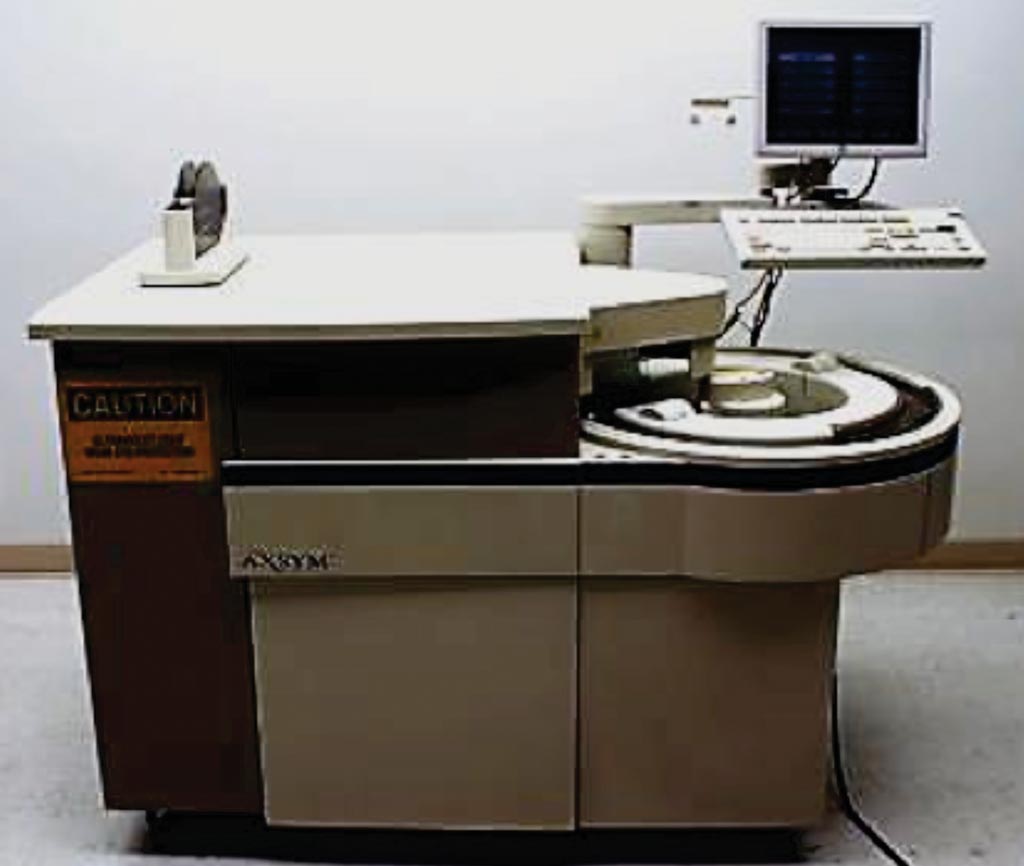Diagnostic Accuracy Compared for Biomarkers of Acute Heart Failure
By LabMedica International staff writers
Posted on 25 Jan 2017
Candidate biomarkers in cardiac disease include the proteins galectin-3, soluble ST2 (sST2) and B-type natriuretic peptide (BNP), but their prognostic value in acute heart failure is uncertain.Posted on 25 Jan 2017
In the pathophysiology of cardiac disease, galectin-3 is thought to play a role through inflammation and fibrosis while blood concentrations of sST2 are significantly increased, in for example inflammatory/infectious diseases, in cancer and in cardiac disease.

Image: The AxSYM automated immunoassay diagnostic analyzer system (Photo courtesy of Abbott Laboratories).
Scientists at the Konventhospital Barmherzige Brueder and their colleagues compare head-to-head the diagnostic and prognostic capabilities of galectin-3, soluble ST2 (sST2) and B-type natriuretic peptide (BNP) for heart failure (HF) in an emergency setting. They studied 251 consecutive patients with dyspnea as a chief compliant presenting to an emergency department. The diagnosis of heart failure (HF) was based on the Framingham score for HF plus echocardiographic evidence of systolic or diastolic dysfunction. All-cause mortality was assessed at one year.
The team collected blood samples for the measurement of BNP concentrations, which were analyzed within the next four hours by a commercially available microparticle enzyme immunoassay assay on an AxSYM analyzer. They measured galectin-3 concentrations with a chemiluminescent microparticle immunoassay on an Abbott’s ARCHITECT i2000SR analyzer and sST2 concentrations with the Presage ST2 enzyme-linked immunosorbent assay on a BEP 2000 instrument.
Of the 251 patients, 137 had dyspnea attributable to acute HF and 114 had dyspnea attributable to other reasons. Of the 137 patients with acute HF, 41 died and 96 survived during follow up. BNP had a higher area under the curve (AUC) for the diagnosis of HF than galectin-3 and sST2. Cut-off values with the highest diagnostic accuracies were 295 ng/L for BNP (sensitivity, 80%; specificity, 86%), 25.9 ng/mL for galectin-3 (sensitivity, 41%; specificity, 75%) and 26.5 ng/mL for sST2 (sensitivity, 76%; specificity, 49%). In contrast to BNP, the biomarkers galectin-3 and sST2 were not independently associated with the diagnosis of acute HF.
The authors concluded that galectin-3, sST2 and BNP were equally useful for the prediction of one-year all-cause mortality in patients with acute HF. However, in contrast to BNP, galectin-3 and sST2 were not useful as an aid in the diagnosis of acute HF in short of breath patients presenting to an emergency department. The study was published on December 1, 2016, in the journal Clinica Chimica Acta.














